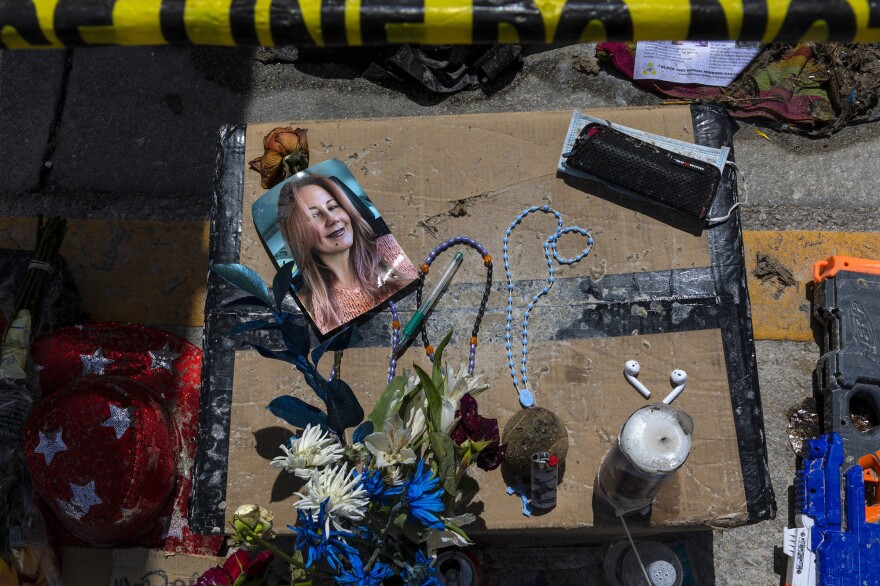Recovery crews at the site of the condo collapse in Surfside, Fla., continue to find and identify the bodies of those who died in the June 24 tragedy.
There is also another objective for those sifting through the rubble: collecting the property of the victims.
"Baseballs, pictures, keepsakes, rings, safes, cash, wine bottles not destroyed," Surfside Mayor Charles Burkett said as he recounted some of the items discovered in the pile of concrete and other debris.
Burkett has seen up close the police operation — largely kept from public view — tasked with managing the residents' possessions that are uncovered and creating an inventory.
"It's everything that you can imagine that you would find in a building," Burkett said. "They're finding it, and they're preserving it."
A team is making an inventory
Miami-Dade Police Sgt. Danny Murillo leads a team of about 10 people who mark the items based on where they're found at the collapse site and then store them in several locked shipping containers.
The police also invited local rabbis onto the scene to help determine which items have religious significance.
"Some things are extremely damaged," Murillo said. "Some things don't have a scratch on them."
While authorities attempt to identify what certain items are and where in the tower they might have been located, they are also asking families to list what property they or their loved ones left behind in the Champlain Towers South building.
Eventually, once the inventory process is complete, officials will return the items to their owners.
"My task is to sort and locate as much property as we can, and to store it the best way possible, so hopefully the rightful owners can, I guess, reunite with their property," Murillo said.

"They knew this was his ring"
Some property found at the collapse site has already been connected to its owners.
Burkett, the Surfside mayor, said a member of the Israel Defense Forces who was assisting in the recovery effort showed him a photo of a gold ring he found in the rubble.
The ring apparently belonged to Brad Cohen, whose daughter, Elisheva, Burkett saw praying at the collapse site one day.
"They knew what his unit was, and apparently they knew that was his ring," Burkett said.
Recovery crews are in regular contact with the victims' families, Burkett said, and end up forming bonds with them.
The workers not only want to find remains to help families get closure but also return any lost items that hold great value to survivors and the loved ones of those who died.
"It just goes to show you the extent to which these rescue teams take their jobs seriously. It's not just show up, get on the pile, and dig for stuff and people," Burkett said. "It is a huge intelligence operation."
Miami-Dade Police Director Alfredo Ramirez echoed that sentiment during a recent press conference.
"These artifacts are very important to families. It could be the smallest little thing that to a common person it just looks like a little container, but it really means [something to] generations," Ramirez said.
"Our officers are learning so much about culture. There's just so many dynamics here. With the sadness and the sorrow, there's a unity component. We learn about each other."
Copyright 2023 NPR. To see more, visit https://www.npr.org.



